Why Chinchilla Fur Is So Dense: The Science Behind It
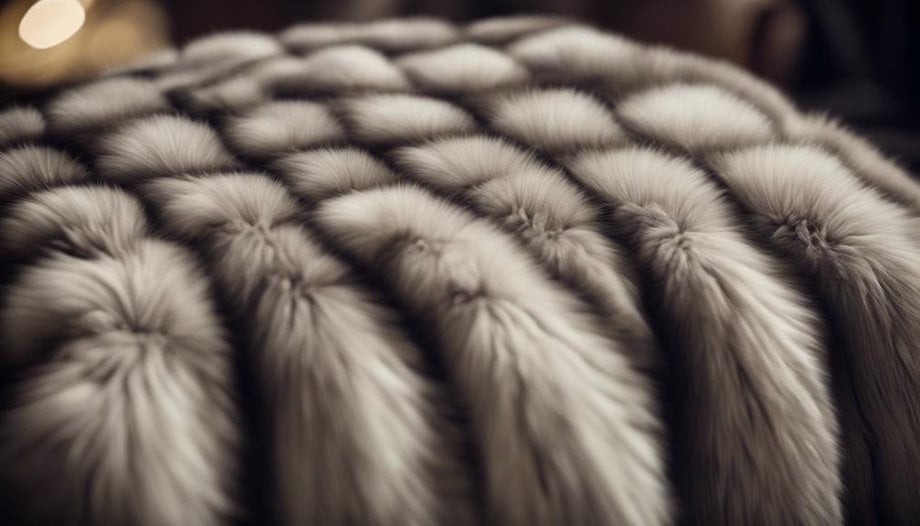
The Science Behind Chinchilla Fur Density: Genetic Adaptations and Evolutionary Wonders Unraveled.
Unlocking the Secrets of Chinchilla Fur Density.
Evolutionary Adaptation for Insulation
Chinchilla fur density has evolved as a highly efficient mechanism for insulation in response to their natural habitats' often harsh and fluctuating environmental conditions. Through the process of natural selection, chinchillas with denser fur were more likely to survive and reproduce, passing on this advantageous trait. The evolutionary benefits of this dense fur include enhanced insulation efficiency, which helps chinchillas regulate their body temperature in cold environments, preventing heat loss and maintaining metabolic functions.
The structure of chinchilla fur consists of two layers: a dense undercoat and longer guard hairs. This combination creates a barrier that traps air close to the body, providing additional insulation. Moreover, the fine texture of chinchilla fur allows for maximum air retention, further contributing to its insulating properties. As a result, chinchillas can thrive in their natural habitats, such as the Andes Mountains, where temperatures can fluctuate drastically between day and night. The evolution of dense fur in chinchillas showcases nature's remarkable ability to adapt and optimize for survival in challenging environments.
Unique Hair Follicle Structure

Chinchillas possess a distinctive hair follicle structure that plays a crucial role in their fur density. The shape of their hair follicles and various density factors determine the lushness and insulating properties of their fur.
Understanding these unique features sheds light on how chinchillas have adapted to their environments to maintain optimal body temperature.
Hair Follicle Shape
With a unique hair follicle structure that sets them apart from many other small mammals, chinchillas possess hair follicles that are cylindrical in shape, contributing to their dense fur coat. These cylindrical hair follicles play a crucial role in the insulation efficiency of the chinchilla's fur.
The shape allows for optimal trapping of air within the fur, creating a layer of insulation that helps regulate the chinchilla's body temperature in its natural habitat. The follicle growth within these cylindrical structures is finely tuned to produce long, fine hairs that densely cover the chinchilla's body.
This specialized hair follicle shape is a key factor in the chinchilla's ability to thrive in cold environments by providing exceptional insulation against the harsh weather conditions.
Follicle Density Factors
One intriguing aspect of the unique hair follicle structure found in chinchillas is its role in determining follicle density factors. The density of chinchilla fur is influenced by various factors related to their hair follicles, impacting the distribution and insulation efficiency of their fur.
- Follicle distribution: Chinchillas have a high density of hair follicles per square inch, contributing to the luxurious thickness of their fur.
- Insulation efficiency: The arrangement of chinchilla hair follicles plays a crucial role in providing exceptional insulation, keeping these small mammals warm in their natural cold habitats.
- Follicle size: The size of chinchilla hair follicles also affects the overall density and quality of their fur, contributing to its softness and warmth.
Role of Guard Hairs
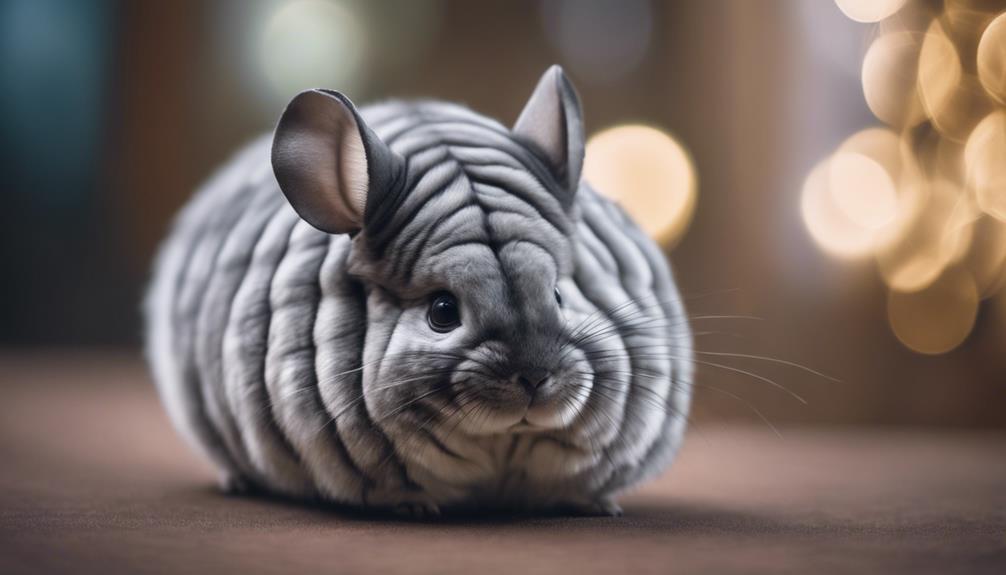
Guard hairs in chinchilla fur serve a crucial function by providing protection and insulation for the underlying softer and denser fur. These long, coarse guard hairs act as the chinchilla's first line of defense against environmental elements such as moisture, wind, and debris. They help repel water and prevent it from reaching the delicate undercoat, keeping the chinchilla dry and warm in its natural habitat. Additionally, guard hairs play a significant role in regulating the chinchilla's body temperature by trapping air close to the skin, creating a layer of insulation that helps retain heat.
Another vital function of guard hairs is in the process of fur shedding. These protective outer hairs help in the removal of dirt, parasites, and dead fur from the chinchilla's coat. Guard hairs act as a shield, preventing debris from reaching the undercoat and maintaining the overall cleanliness and health of the fur. Without the presence of these guard hairs, the chinchilla's undercoat would be more exposed to environmental stressors, leading to potential damage and discomfort for the animal.
Undercoat Density and Function
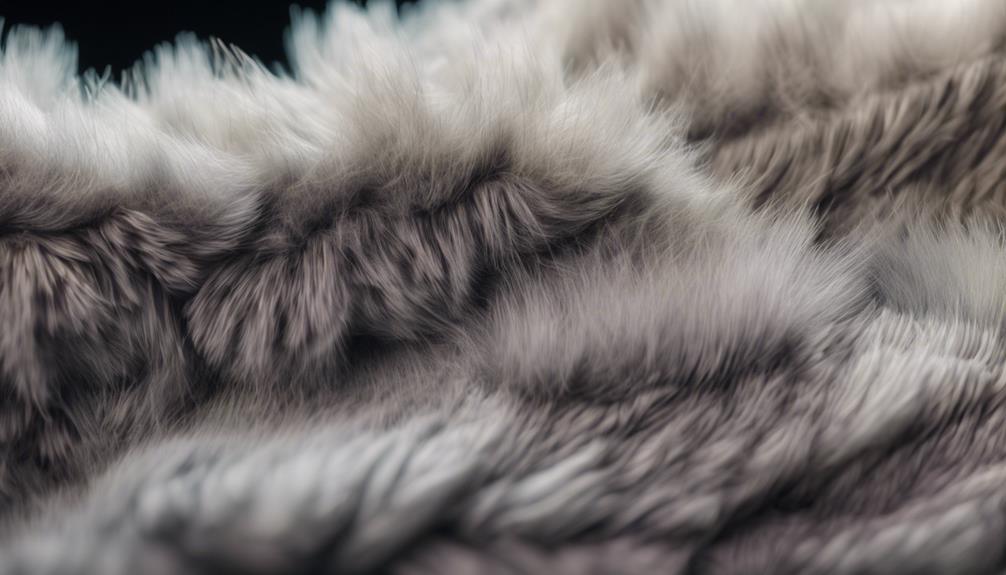
The undercoat of chinchillas plays a crucial role in maintaining their body temperature by trapping warm air close to their skin. This insulating structure is essential for their thermal regulation mechanism, allowing them to thrive in various environmental conditions.
The evolution of chinchilla fur density is closely linked to the development of their undercoat, ensuring their survival in their natural habitats.
Insulating Undercoat Structure
Within the intricate network of a chinchilla's fur, the insulating undercoat structure plays a crucial role in regulating body temperature and protecting against external elements. The undercoat is dense and soft, providing exceptional insulation due to its fine texture and air-trapping properties. This layer traps air close to the skin, creating a thermal barrier that helps retain body heat. The undercoat's structure consists of fine, densely packed hairs that effectively minimize heat loss while offering flexibility for the chinchilla's movements. Additionally, the undercoat serves as a cushion, protecting the chinchilla from impacts and providing comfort. The combination of these factors showcases the remarkable adaptation of chinchilla fur for both insulation and protection.
- Dense and soft texture
- Air-trapping properties
- Fine, densely packed hairs
Thermal Regulation Mechanism
In the intricate network of a chinchilla's fur, the thermal regulation mechanism hinges significantly on the density and function of its undercoat, crucial for maintaining optimal body temperature in varying conditions.
The undercoat, composed of fine, densely packed hairs close to the skin, plays a key role in heat retention, especially during cold weather adaptations. Chinchillas have evolved this dense undercoat to create a barrier that traps warm air close to their bodies, preventing heat loss in chilly environments.
This adaptation helps them conserve energy that would otherwise be spent on maintaining body temperature. By efficiently regulating heat through their undercoat, chinchillas can thrive in diverse climates, showcasing the remarkable effectiveness of their fur in providing insulation and thermal comfort.
Fur Density Evolution
Evolutionary pressures have sculpted the chinchilla's undercoat density and function to precision, optimizing it for thermal regulation in diverse environmental conditions. The evolutionary patterns of the chinchilla's fur density reveal a complex interplay of genetic adaptations and environmental influences over time.
Here's a closer look at how the undercoat density has evolved to serve the chinchilla's insulation strategies:
- Adaptation to Cold Environments: The dense undercoat provides exceptional insulation, allowing chinchillas to thrive in cold mountainous regions.
- Regulation of Body Temperature: Evolution has fine-tuned the undercoat density to help chinchillas regulate their body temperature efficiently.
- Protection from Predators: The thick fur not only aids in insulation but also serves as a protective barrier against potential predators, enhancing the chinchilla's survival chances.
Thermal Regulation Mechanisms
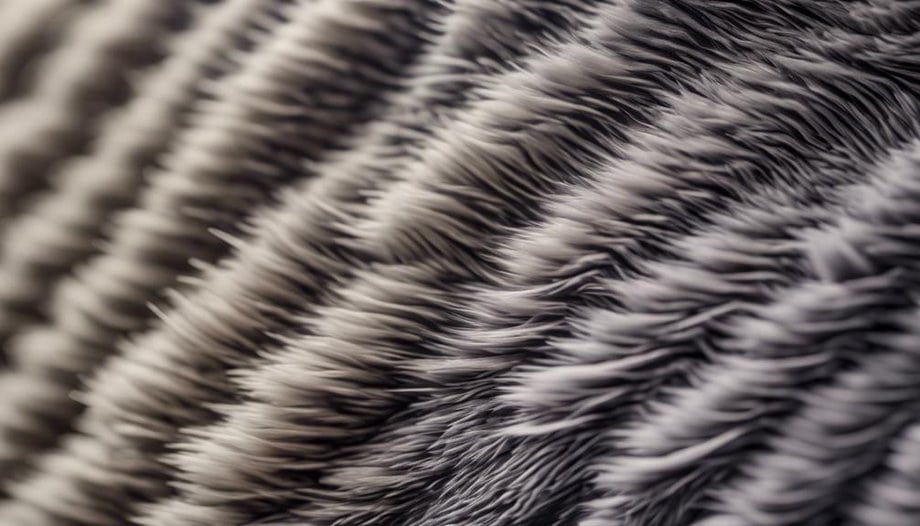
Thermal regulation in chinchillas hinges on a complex interplay of physiological adaptations that control body temperature within optimal ranges. One key mechanism contributing to this regulation is heat retention through the chinchilla's dense fur. The thick coat of fur acts as a barrier, trapping heat close to the body and preventing excessive heat loss in cold environments.
Additionally, the chinchilla's fur density plays a vital role in enhancing cold resistance. The insulating properties of the fur help the chinchilla maintain a stable internal temperature even in frigid conditions, reducing the risk of hypothermia.
Genetic Factors Influencing Fur Density
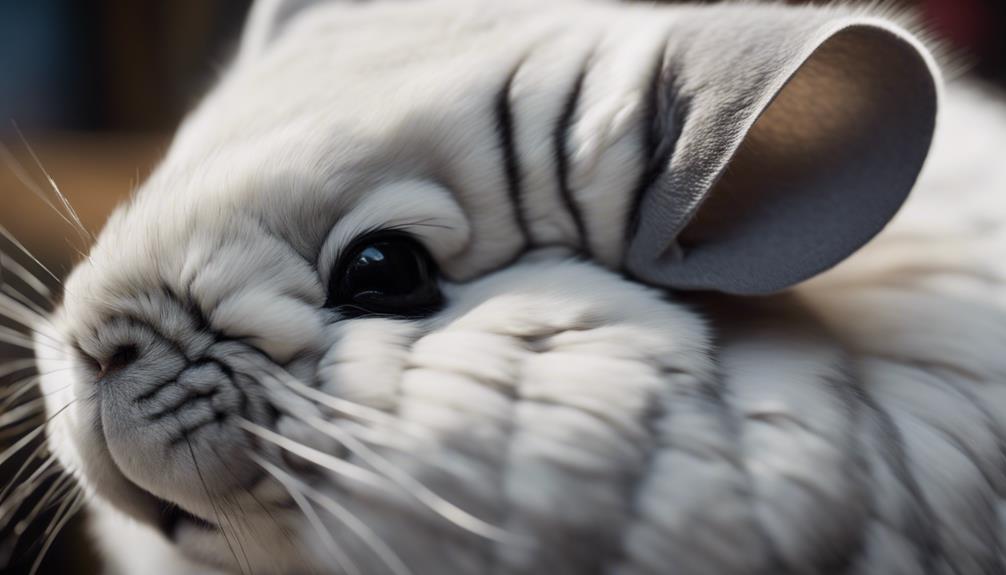
The chinchilla's fur density is significantly influenced by specific genetic factors that regulate the growth and distribution of hair follicles across its body. These genetic factors play a crucial role in determining the luxurious thickness of chinchilla fur. Through inheritance patterns, particular genes are passed down from parent chinchillas to their offspring, impacting fur density. Genetic mutations can also occur, leading to variations in fur density among chinchillas within the same litter.
- Inheritance Patterns: Genetic information related to fur density is inherited from chinchilla parents to their offspring, influencing how thick or dense the fur will be.
- Genetic Mutations: Mutations in certain genes can result in alterations to the growth and distribution of hair follicles, ultimately affecting fur density.
- Fur Density Variability: Due to genetic factors and mutations, chinchillas within the same genetic lineage can exhibit variations in fur density.
Environmental Influences on Fur Growth
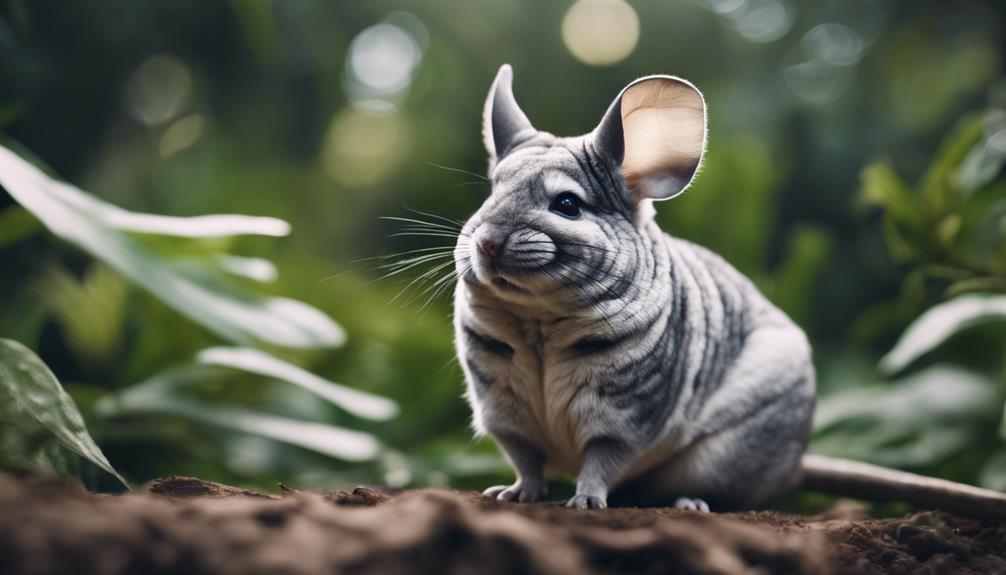
Environmental factors such as humidity and temperature play a significant role in influencing the growth of fur in chinchillas. Chinchillas, native to the Andes Mountains, have adapted to a climate of high altitude, low humidity, and cool temperatures. These environmental conditions have shaped their fur density and growth patterns over generations. In regions where humidity levels are higher, chinchillas tend to have denser fur to provide better insulation and protection against moisture. Conversely, in drier climates, chinchillas may have slightly lighter fur to prevent overheating.
Climate adaptation plays a crucial role in determining the fur density of chinchillas. The thickness of their fur acts as a natural barrier against the elements, helping them regulate body temperature and stay warm in cold environments. Environmental factors such as temperature fluctuations and humidity levels directly impact the growth rate and quality of chinchilla fur. Understanding these influences is essential for maintaining the well-being of these small mammals in captivity, ensuring they're provided with suitable conditions for healthy fur growth.
Frequently Asked Questions
How Do Chinchillas Groom Themselves to Maintain the Density of Their Fur?
Chinchillas groom themselves meticulously, utilizing grooming techniques to maintain the density of their fur. Their shedding cycles also play a crucial role in keeping their fur thick and plush, ensuring optimal insulation and protection.
What Are the Differences in Fur Density Between Wild Chinchillas and Those in Captivity?
In captivity, chinchillas have denser fur compared to their wild counterparts. This difference can be attributed to selective breeding practices and environmental factors influencing fur quality. Genetic variations and grooming habits also play a crucial role in maintaining fur density.
Can Chinchillas Adapt to Warmer Climates and Change the Density of Their Fur Accordingly?
Chinchillas, under evolutionary pressure, can adapt fur density to regulate body temperature in response to climate change. This thermal regulation mechanism allows them to thrive in various environments, showcasing their remarkable ability to adjust.
Are There Any Known Predators of Chinchillas That Have Influenced the Evolution of Their Dense Fur?
Chinchillas' dense fur evolved due to predation risk. Natural selection favored those with thicker coats, reducing vulnerability to predators. This adaptation showcases how evolutionary pressures shape fur density to increase survival chances in the wild.
How Do Chinchillas' Fur Density and Thermal Regulation Mechanisms Compare to Other Small Mammals With Similar Habitats?
Chinchillas' fur density and thermal regulation mechanisms stand out among small mammals in their habitat. The dense fur provides excellent insulation properties, offering evolutionary advantages against environmental pressures. This adaptation helps chinchillas maintain body temperature effectively.










